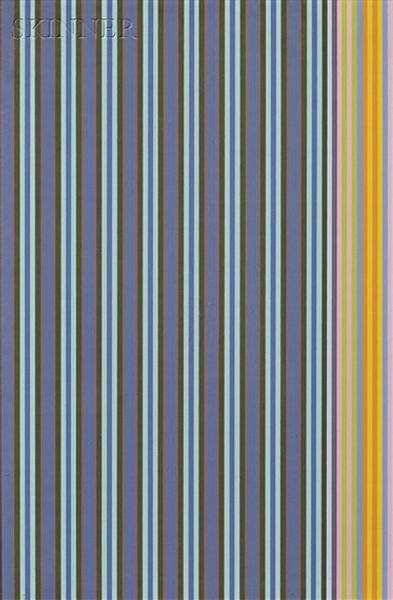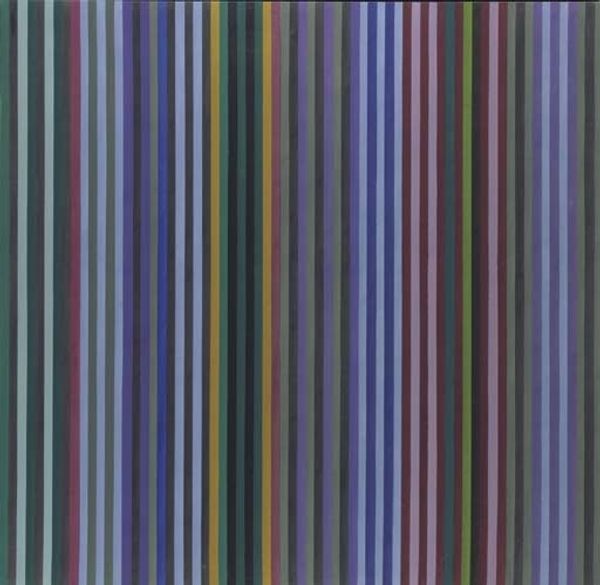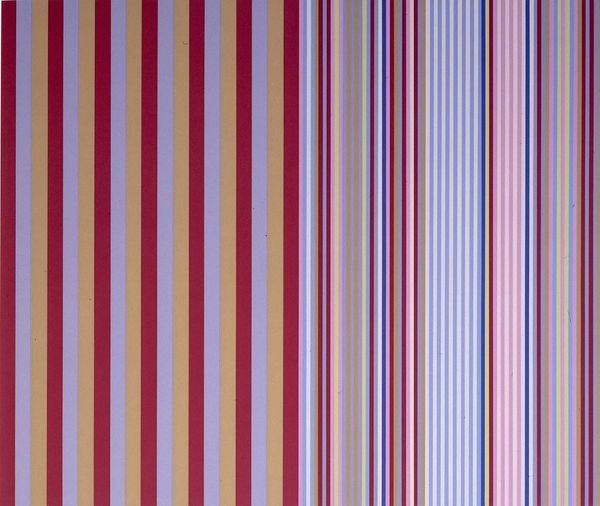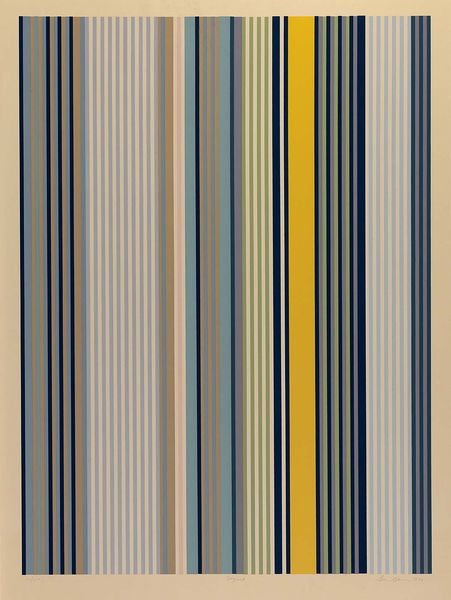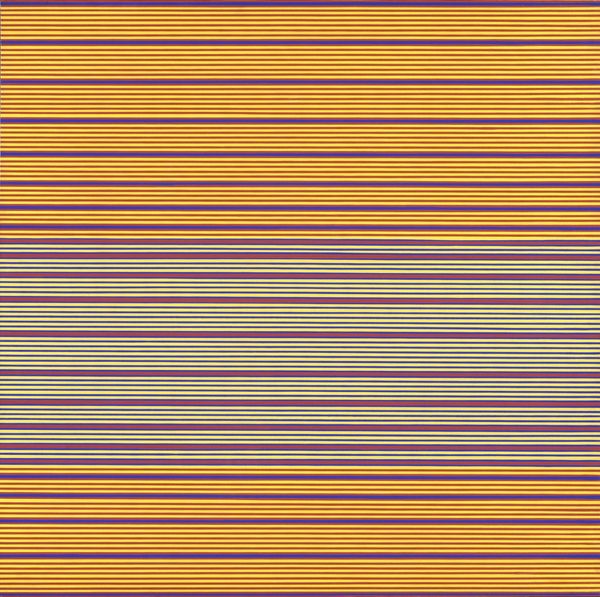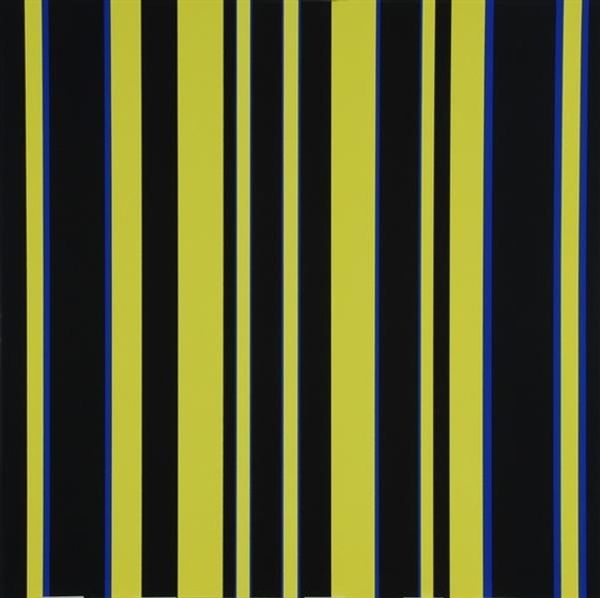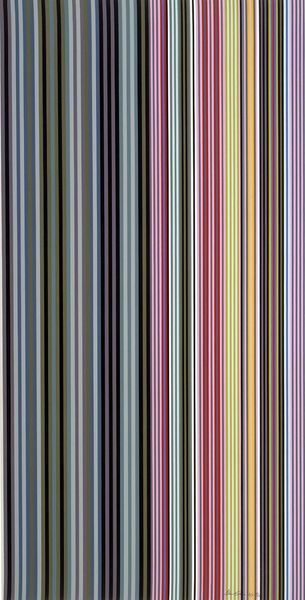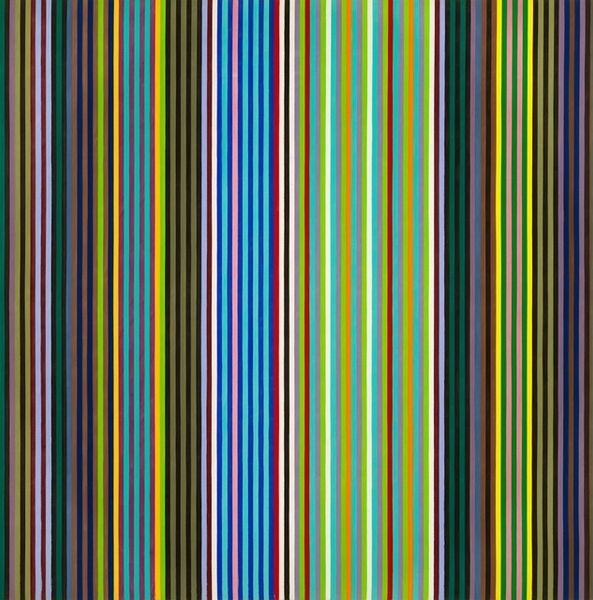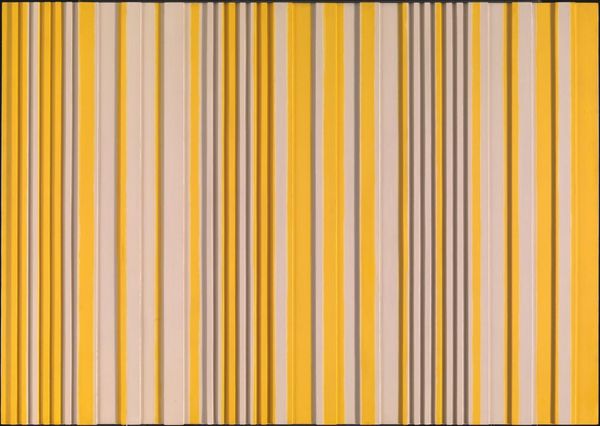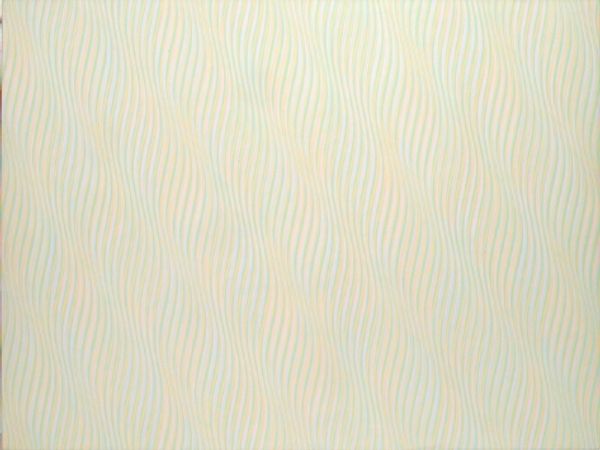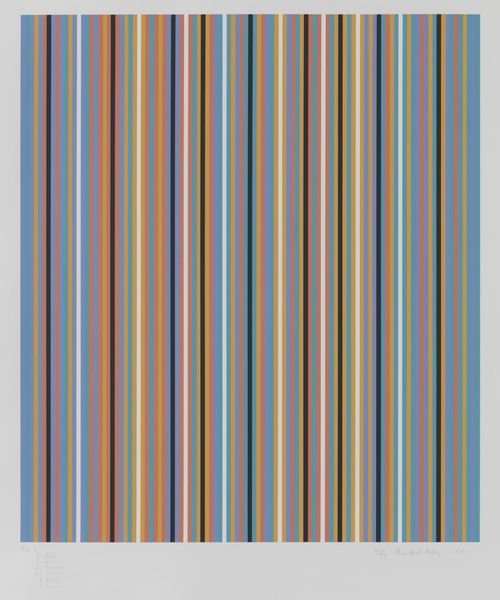
Dimensions: support: 2413 x 2159 mm
Copyright: © Bridget Riley 2014. All rights reserved, courtesy Karsten Schubert, London | CC-BY-NC-ND 4.0 DEED, Photo: Tate
Editor: Looking at Bridget Riley’s "Cantus Firmus", with its rhythmic, colored stripes, I am struck by the sheer labor involved in creating something so precise. What can you tell me about the means of production in this piece? Curator: The repetitive nature invites us to consider industrial processes, challenging the romantic notion of the artist's unique touch. How does Riley engage with the commodification of art through mass production? Editor: I see what you mean, it is very systematic. Almost like the steps involved in printing, but instead of a machine, it is a human hand repeating. Curator: Precisely. Thinking about this, what does the work say about the relationship between handmade and manufactured aesthetics, and how do audiences consume such an image? Editor: It's fascinating to consider the cultural context of labor and consumption when looking at this piece. Thank you. Curator: Indeed. Examining the making informs our appreciation.
Comments
Join the conversation
Join millions of artists and users on Artera today and experience the ultimate creative platform.
tate 6 months ago
⋮
The title is a musical term describing a regular metric and harmonic theme upon which variations of melody and rhythm, voices or instruments are based. Here the proportions and positions of the colours - the blacks, whites and even the greys - are repeated in the same order throughout. Only the greys vary in moving from a light tone, close to the colour bands on both sides, to a deeper, nearly black shade just off-centre. This subtle movement and the displacement of balance give a surprising sense of depth to an otherwise flat space. Gallery label, August 2004
